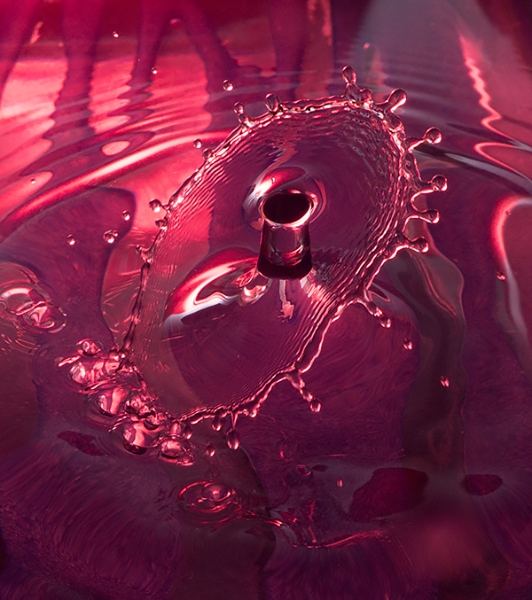I have written a couple of posts over the last week or so about my experiments in water drop photography using the StopShot control equipment that I recently purchased. The StopShot is one of several devices that are sold for the purpose of triggering a camera and/or one or more flash units to freeze high-speed actions such as the splashing of water drops into a tray of water or other liquid. (Others include the Time Machine from www.bmumford.com; and the Universal Timer from www.universaltimer.com.)
My previous attempts were done with the Sony DSC-RX100 camera. I chose that camera in part because it has a BULB setting for shutter speed, so you can press the shutter button and hold the shutter open while triggering the flash with the StopShot. As I learned more about the techniques that others use, I realized that the camera you use does not have to have a BULB setting. Instead, you can set the shutter speed to a fairly long setting, such as 0.5 second, and then make sure you trigger the flash while the shutter is open.
With that realization, the range of cameras I can use for photographing water drop splashes increased dramatically. All of the cameras I have written books for have shutter speed settings of 0.5 second and longer. So I decided to test the StopShot setup with the Panasonic Lumix LX7. (Of course, the Leica D-Lux 6, being similar to the LX7, would operate in much the same way for this purpose.)
I won’t discuss all the details of setting up the equipment and taking the pictures; further information about the setup is available in my first post and second post about water drop photography with the Sony RX100. The only difference in this case is that I set the shutter speed to 0.5 second, and, because of that, I was able to use the self-timer (set to 2 seconds), to avoid camera shake from physically touching the camera. It was not difficult to press the button on the StopShot to release a pair of water drops at the right time; I soon learned to press that button just as the self-timer ran out and the half-second exposure began. Then, the flash fired to capture the water drops colliding while the shutter was open.
For the photos in the gallery below, I aimed the Yongnuo flash unit at a deep red sheet of paper on the wall behind the water tray, so the water was illuminated by the red flash bouncing off the wall. The streaky patterns below the water tray are from streaks of water on a piece of paper placed beneath the tray. The shots below are my first water drop shots taken with a setting other than BULB. I hope to do more experiments with other cameras in the future.









